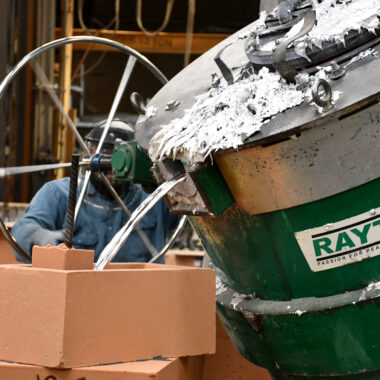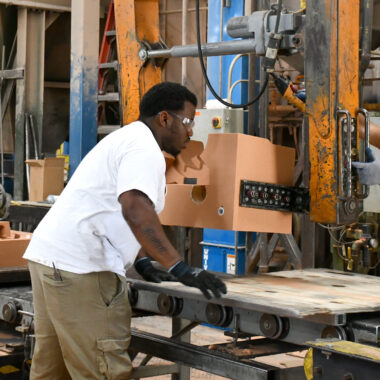Optimizing Performance: Let Loose the Power of Aluminum Casting for Superior Products
Optimizing Performance: Let Loose the Power of Aluminum Casting for Superior Products
Blog Article
Study the World of Aluminum Spreading: Comprehending the Various Methods
Light weight aluminum spreading is a fundamental procedure in the production market, with different techniques utilized to develop detailed and specific components. Comprehending the various methods utilized in light weight aluminum casting can provide beneficial understandings right into the capacities and constraints of each strategy. From the typical sand spreading approach to the innovative die casting procedure, each method uses special advantages depending upon the requirements of the project. Checking out these diverse techniques can provide an extensive view of the possibilities within the world of aluminum casting and just how each technique adds to forming the contemporary manufacturing landscape.
Sand Spreading Method
Sand spreading, a widely-used method in light weight aluminum casting procedures, includes creating molds made of compacted sand for putting liquified steel. Once the mold and mildew is prepared, it is firmly positioned in a flask and molten aluminum is poured into the dental caries.
After the steel has actually cooled down and strengthened, the sand mold and mildew is damaged away to disclose the aluminum casting. Sand spreading allows for the production of complex shapes and big parts that may be tough or expensive to generate utilizing other techniques. It is additionally a sustainable method as the sand can be recycled and made use of several times, lowering waste in the casting process.
Permanent Mold And Mildew Strategy

One significant advantage of the Permanent Mold Method is the improved dimensional precision it provides. The metal mold and mildew permits for tighter resistances and finer details in the last light weight aluminum castings compared to sand casting techniques. This precision makes it a preferred selection for applications where tight dimensional control is important, such as in the auto and aerospace sectors.

Die Casting Refine

Investment Casting Strategy
Using an accuracy spreading technique, Investment Casting Technique entails creating elaborate aluminum components by pouring molten metal into a ceramic mold and mildew. This procedure, additionally recognized as lost-wax spreading, begins with the creation of a wax pattern of the preferred part (aluminum casting).
Financial investment casting is frequently used for producing components in markets where detailed layouts and tight tolerances are needed, such as aerospace, auto, and medical devices. The adaptability and accuracy of the Investment Casting Strategy make it a useful method in the world of aluminum casting.
Lost Foam Spreading Technique
Having actually checked out the elaborate accuracy of Financial investment Casting Method, the focus currently moves to the ingenious technique of Lost Foam Spreading in aluminum part production. Lost Foam Spreading, likewise recognized as evaporative pattern casting, is a contemporary method where a foam pattern of the desired component is great site created and afterwards coated with a refractory product. The coated foam pattern is then hidden in sand, and molten light weight aluminum is poured right into the mold and mildew. As the metal loads the mold and mildew, the foam vaporizes as a result of the warmth, leaving a clean tooth cavity in the form of the desired component.
Additionally, Lost Foam Spreading is an affordable process as it reduces the demand for cores and allows for the production of lightweight elements. In spite of its advantages, Lost Foam Spreading requires mindful control of the spreading procedure to make sure and protect against flaws quality parts.
Final Thought
To conclude, aluminum casting offers a variety of methods such as sand spreading, irreversible mold strategy, die casting, financial investment spreading, and shed foam casting. Each method has its very own advantages and applications, making aluminum casting a functional and extensively used procedure in various sectors. Understanding the distinctions between these techniques is crucial in picking one of the most suitable spreading strategy for certain manufacturing demands.
Sand casting, a widely-used method in light weight aluminum spreading processes, involves creating mold and mildews made of compacted sand for pouring molten steel. aluminum casting.The Permanent Mold And Mildew Strategy, like sand casting, is another widespread technique utilized in light weight aluminum casting processes, providing unique advantages in terms of mold reusability and dimensional accuracy. The metal mold enables for tighter resistances and better information in the final aluminum spreadings compared to sand casting approaches. The two major kinds of die casting are cold chamber pass away casting and hot chamber pass away spreading, each suitable for various kinds of aluminum alloys.In conclusion, aluminum casting offers a variety of approaches such as sand spreading, irreversible mold and mildew technique, pass away casting, investment casting, and shed foam casting
Report this page